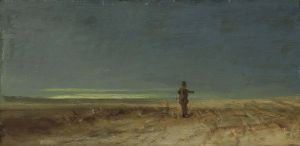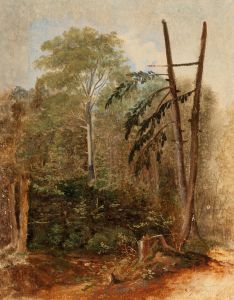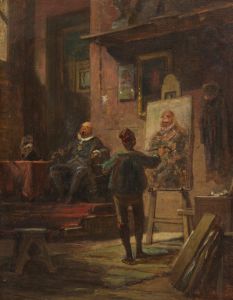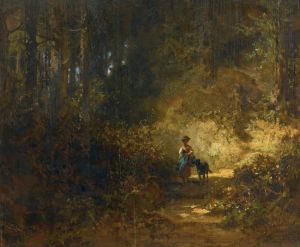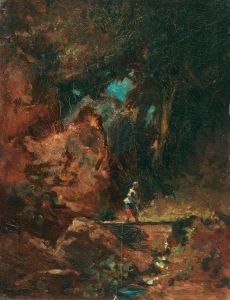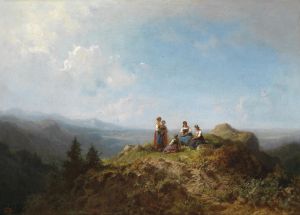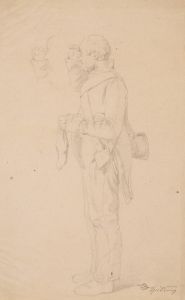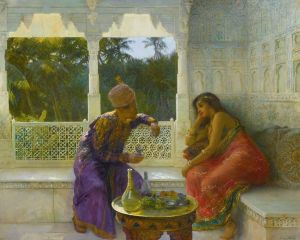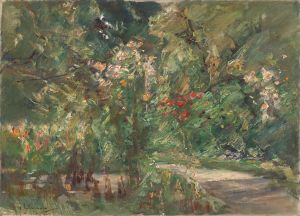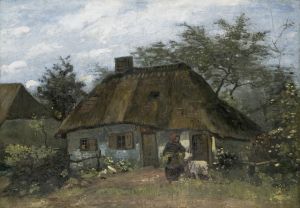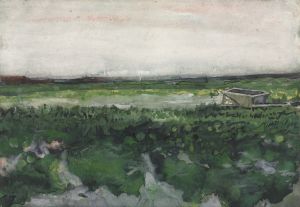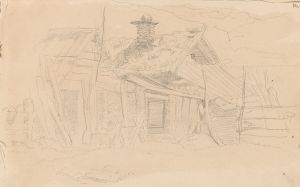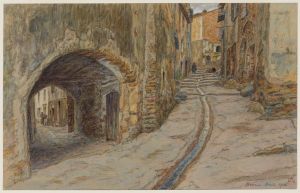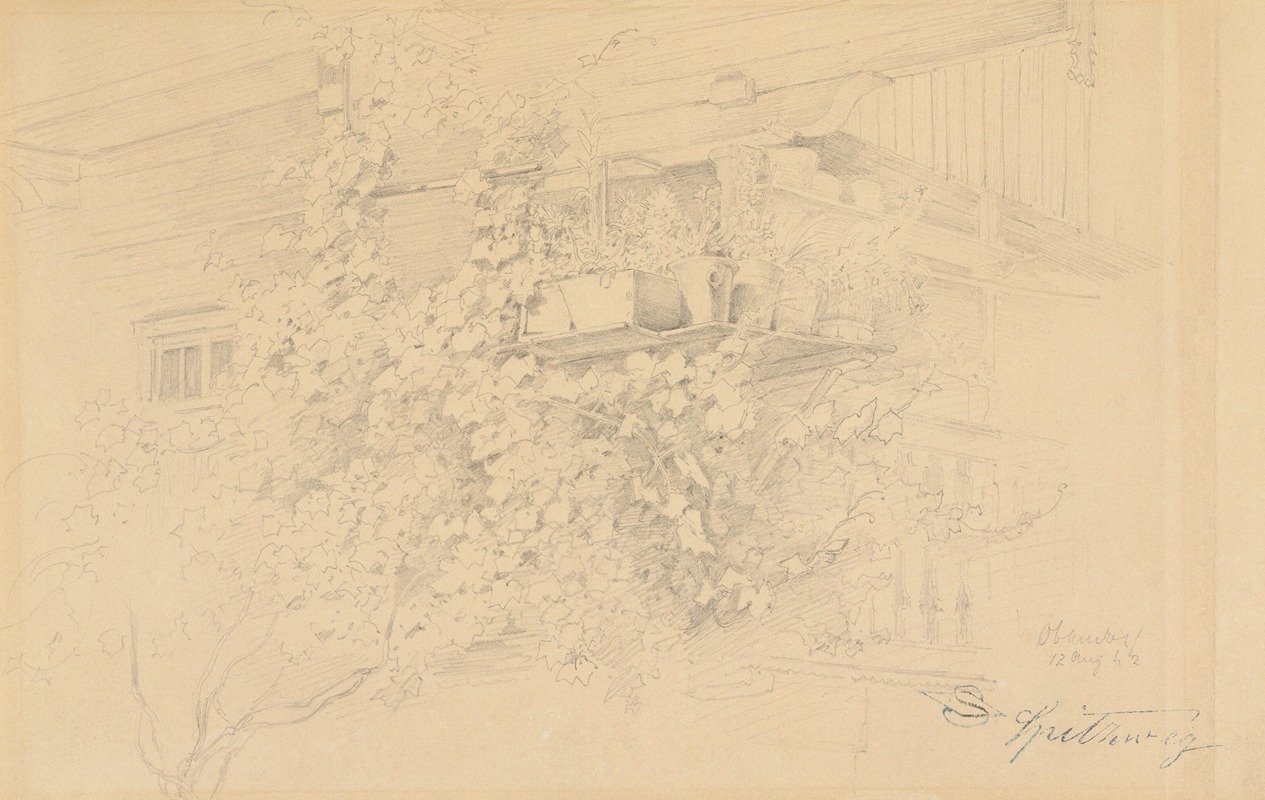
Ecke eines Bauernhauses mit rankendem Weinlaub und Blumentöpfen
A hand-painted replica of Carl Spitzweg’s masterpiece Ecke eines Bauernhauses mit rankendem Weinlaub und Blumentöpfen, meticulously crafted by professional artists to capture the true essence of the original. Each piece is created with museum-quality canvas and rare mineral pigments, carefully painted by experienced artists with delicate brushstrokes and rich, layered colors to perfectly recreate the texture of the original artwork. Unlike machine-printed reproductions, this hand-painted version brings the painting to life, infused with the artist’s emotions and skill in every stroke. Whether for personal collection or home decoration, it instantly elevates the artistic atmosphere of any space.
Carl Spitzweg's painting "Ecke eines Bauernhauses mit rankendem Weinlaub und Blumentöpfen" (translated as "Corner of a Farmhouse with Climbing Vine and Flower Pots") is a charming example of 19th-century German art. Spitzweg, born in 1808 in Munich, was a prominent figure in the Biedermeier period, a time characterized by a focus on the domestic and the idyllic, often reflecting the middle-class values of the era. His works frequently depicted quaint, everyday scenes imbued with a sense of warmth and tranquility.
This particular painting captures a serene corner of a farmhouse, adorned with climbing vines and flower pots, showcasing Spitzweg's keen eye for detail and his ability to infuse ordinary scenes with a sense of beauty and harmony. The composition reflects his interest in nature and domestic life, common themes in his oeuvre. The climbing vine, a recurring motif in Spitzweg's work, symbolizes growth and the passage of time, while the flower pots add a touch of color and life to the scene.
Spitzweg's technique is notable for its delicate brushwork and subtle use of color, which together create a soft, atmospheric quality. His ability to capture light and shadow adds depth to the painting, enhancing the three-dimensionality of the scene. The careful attention to detail in the depiction of the leaves and flowers demonstrates Spitzweg's skill as an observer of nature.
The painting is a testament to Spitzweg's ability to find beauty in the mundane. By focusing on a simple corner of a farmhouse, he elevates the ordinary to the extraordinary, inviting viewers to appreciate the quiet elegance of everyday life. This approach is characteristic of the Biedermeier style, which often emphasized simplicity and modesty, reflecting the social and political climate of the time.
Spitzweg's work was largely influenced by his background and personal experiences. Originally trained as a pharmacist, he was largely self-taught as an artist. His scientific background may have contributed to his meticulous attention to detail and his interest in the natural world. Despite his lack of formal training, Spitzweg became one of the most beloved artists of his time, celebrated for his ability to capture the essence of 19th-century German life.
"Ecke eines Bauernhauses mit rankendem Weinlaub und Blumentöpfen" exemplifies Spitzweg's talent for creating intimate, contemplative scenes that resonate with viewers. The painting invites reflection on the beauty of nature and the simple pleasures of rural life, themes that continue to resonate with audiences today. Through his art, Spitzweg offers a window into a bygone era, capturing the spirit of the Biedermeier period with grace and sensitivity.
While specific details about the provenance and current location of this painting may not be widely documented, it remains an important part of Carl Spitzweg's legacy. His work continues to be celebrated for its charm, technical skill, and ability to evoke a sense of nostalgia for a simpler time.





